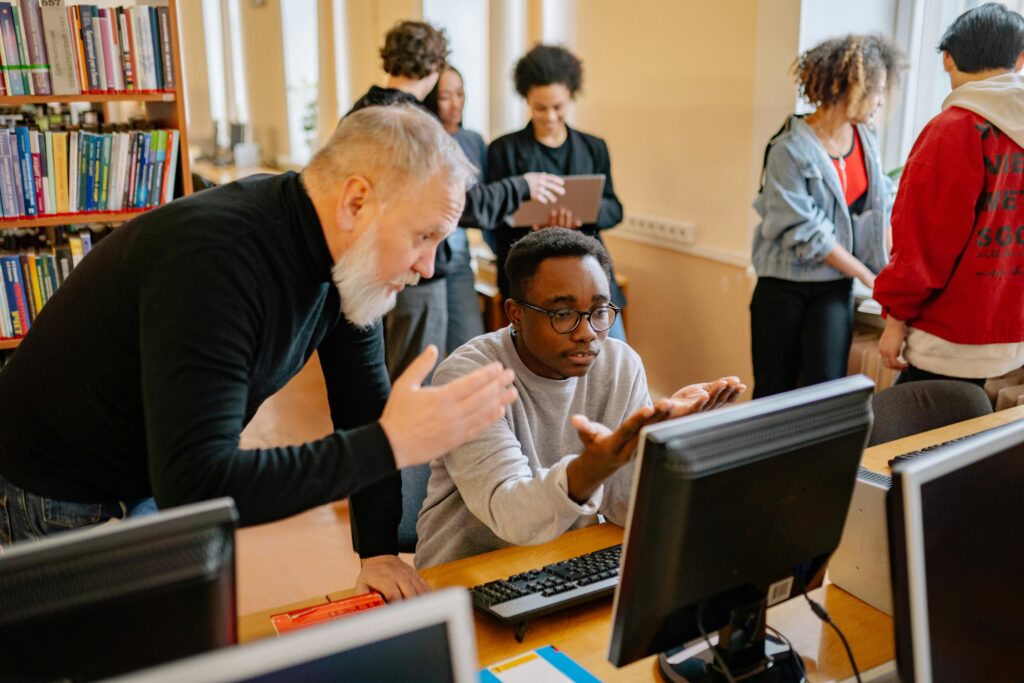Tips for Effective Parent-Teacher Communication

Tips for Effective Parent-Teacher Communication
Effective communication between parents and teachers is crucial for a child’s academic success. When parents and teachers work together, they create a supportive environment that fosters learning and personal development. Here are some innovative techniques for enhancing parent-teacher communication, backed by communication and behavioral experts, to help ensure that children receive the best possible support in their education.
The Importance of Parent-Teacher Communication
Research has shown that children perform better academically when their parents are involved in their education. According to Dr. Joyce Epstein, a leading expert in family-school-community partnerships, effective communication between parents and teachers leads to higher student achievement, better attendance, and a more positive attitude toward school.

Tips for Parents
- Be Proactive:
- Technique: Take the initiative to communicate with your child’s teacher, rather than waiting for them to reach out.
- Implementation: Schedule meetings or send emails to discuss your child’s progress or any concerns you may have. Regularly check the school’s communication platform to stay updated on your child’s activities. For example, setting a reminder to check in with your child’s teacher every few weeks, even if there are no immediate concerns, can help build a strong partnership and keep lines of communication open.
- Prepare for Parent-Teacher Conferences:
- Technique: Make the most of parent-teacher meetings by being well-prepared.
- Implementation: Before the meeting, write down any questions or concerns you have. Review your child’s recent work and progress reports to have specific topics to discuss. For example, bring a list of questions about your child’s social and academic development, and be ready to share your observations from home. This preparation helps ensure that the meeting is productive and focused on your child’s needs.
- Practice Active Listening:
- Technique: Engage in active listening during conversations with your child’s teacher.
- Implementation: Listen carefully to what the teacher is saying without interrupting. Show that you are paying attention by nodding, making eye contact, and summarizing what they’ve said to ensure understanding. For instance, if a teacher mentions a concern about your child’s behavior, you might respond by saying, “I understand that you’ve noticed some issues with focus in class. Can you share more about what you’ve observed?” This approach ensures that you fully grasp the situation and can respond thoughtfully.
- Collaborative Problem-Solving:
- Technique: Work together with your child’s teacher to find solutions to any challenges your child may be facing.
- Implementation: Approach discussions with a collaborative mindset. Be open to suggestions and share your ideas for supporting your child both at home and in school. For example, if your child is struggling with a particular subject, discuss with the teacher what strategies could help. You might agree on additional resources or tutoring and establish a follow-up plan to monitor progress. This teamwork can significantly improve your child’s educational experience.

Tips for Teachers
- Set Clear Expectations Early:
- Technique: Establish communication expectations at the beginning of the school year.
- Implementation: Share your preferred methods of communication with parents (email, phone, school portal) and outline how often they can expect updates. Provide a communication plan that details when and how you will share progress reports and other important information. For example, sending a welcome letter to parents at the start of the year can include your contact information, office hours, and the best way to reach you. Including a brief survey to understand parents’ communication preferences can further enhance the effectiveness of this approach.
- Utilize Technology for Regular Updates:
- Technique: Leverage digital tools to keep parents informed about their child’s progress.
- Implementation: Use school apps, websites, or messaging platforms to provide regular updates on homework, grades, and classroom activities. This allows parents to stay informed in real-time and engage with their child’s learning. For instance, platforms like Seesaw, ClassDojo, or Microsoft Teams can be used to share daily or weekly updates, photos of class activities, and even messages of encouragement, making it easy for parents to stay connected.
- Two-Way Communication:
- Technique: Encourage open dialogue between yourself and parents.
- Implementation: Create opportunities for parents to share their insights and concerns about their child’s education. Regularly ask for feedback and be receptive to their input. You might schedule regular “check-in” emails where parents can share how they feel their child is progressing or any issues they notice at home, encouraging them to ask questions or request meetings as needed.
- Cultural Sensitivity:
- Technique: Recognize and respect the cultural backgrounds of your students and their families.
- Implementation: Tailor your communication style to be inclusive of all cultural norms and practices. If necessary, offer translated materials or provide access to interpreters. For example, for multilingual families, consider sending communications in multiple languages or using translation services to ensure all parents understand key messages.

Case Study: Effective Communication in Action
The Rodriguez family noticed that their son, Miguel, was having trouble keeping up with his schoolwork. They decided to reach out to his teacher, Ms. Patel, to discuss their concerns. Ms. Patel used their preferred method of communication—email—to schedule a meeting.
During the meeting, Ms. Patel shared her observations and listened to the parents’ concerns. Together, they developed a plan that included regular progress updates via the school’s portal and additional support sessions for Miguel. The collaborative approach and consistent communication led to significant improvements in Miguel’s performance and confidence.
Conclusion
Effective parent-teacher communication is key to a child’s academic success. By implementing these innovative techniques, both teachers and parents can work together to create a supportive and nurturing environment for students. Open dialogue, cultural sensitivity, and proactive involvement are essential components of a strong partnership between home and school.



